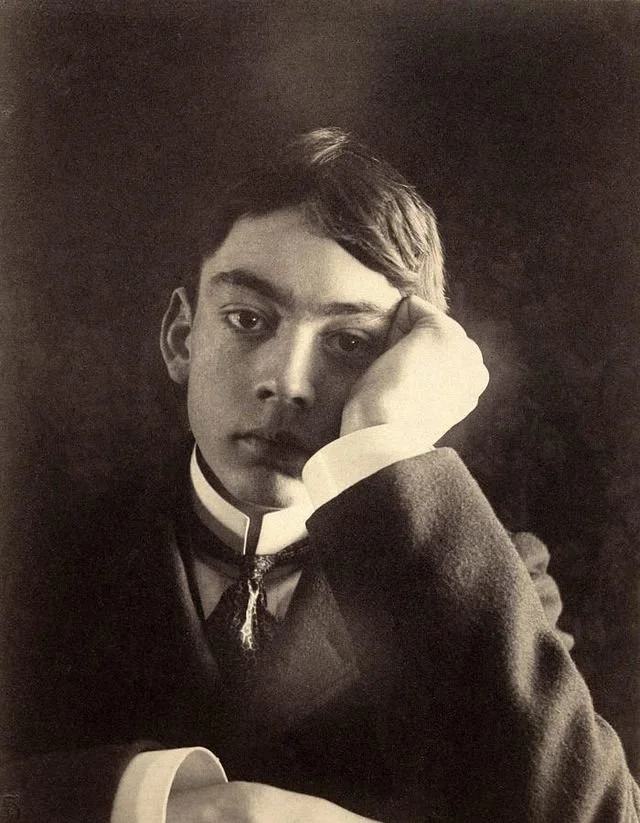Gibran Khalil Gibran: The Mystic Poet and His Timeless Wisdom
Introduction
Gibran Khalil Gibran (1883-1931), one of the most celebrated writers and artists of the 20th century, continues to inspire readers worldwide through his profound wisdom and deep understanding of the human condition. Born in Lebanon and later settling in the United States, Gibran transcended the barriers of language, culture, and geography through his timeless literary works, which include The Prophet, The Broken Wings, and The Madman. This blog delves into the life of Gibran Khalil Gibran, exploring his most notable works and their far-reaching impact on the world from his time until now.
Early Life and Education
Gibran was born in Bsharri, a small village nestled in the mountains of Lebanon. Despite facing poverty and hardship during his childhood, Gibran's mother instilled in him a deep love for education, which ultimately shaped his future. The family emigrated to Boston in 1895, where Gibran immersed himself in literature and the arts. He was soon introduced to Fred Holland Day, a prominent photographer and publisher, who recognized Gibran's talent and encouraged him to pursue his creative passions.
In 1898, Gibran returned to Lebanon to further his education at Madrasat al-Hikmah, a Maronite school in Beirut. There, he studied Arabic literature and the works of prominent Western writers, such as Shakespeare and Goethe. This period of intellectual and artistic growth laid the foundation for Gibran's unique fusion of Eastern and Western philosophical thought in his later works.
The Emergence of a Literary Genius
Gibran's literary career took off in 1904 with the publication of his first book, Spirits Rebellious, written in Arabic. The book critiqued the social, religious, and political norms of the time, which led to its ban by the Ottoman Empire. This act of censorship only fueled Gibran's desire to challenge societal norms, and his subsequent works, such as The Broken Wings (1912) and The Madman (1918), further explored themes of love, freedom, and spiritual awakening.
The Prophet: A Masterpiece of Universal Wisdom
Gibran's magnum opus, The Prophet, was published in 1923 and remains his most celebrated work. Comprising 26 prose poetry essays, the book tells the story of Almustafa, a prophet who shares his wisdom on various aspects of life with the people of Orphalese before departing to his homeland. The Prophet's timeless insights and profound reflections have resonated with generations of readers, transcending cultural, religious, and geographical boundaries.
One of the most famous passages from The Prophet addresses the topic of love:
"Love has no other desire but to fulfill itself. But if you love and must needs have desires, let these be your desires: To melt and be like a running brook that sings its melody to the night. To know the pain of too much tenderness. To be wounded by your own understanding of love; And to bleed willingly and joyfully. To wake at dawn with a winged heart and give thanks for another day of loving; To rest at the noon hour and meditate love's ecstasy; To return home at eventide with gratitude; And then to sleep with a prayer for the beloved in your heart and a song of praise upon your lips."
The Prophet's Impact on the World
The Prophet quickly gained international acclaim and has since been translated into over 100 languages. Its universal themes of love, freedom, and spirituality have inspired countless individuals, from world leaders to artists, and its influence can be seen in various aspects of popular culture, including music, film, and theater.
Gibran's influence extends beyond literature, as his works have also played a significant role in shaping social and political movements. For instance, during the 1960s, The Prophet was embraced by the counterculture movement in the United States, which advocated for peace, love, and personal freedom. Gibran's ideas on individualism, self-expression, and the rejection of materialism resonated with the movement's core values.
Moreover, Gibran's works have had a lasting impact on the Middle East, where he is often regarded as a pioneer of the Arab Renaissance. His writings, which emphasize progressive thought, social justice, and the need for cultural and intellectual reform, have served as an inspiration for many Arab intellectuals and artists. As a result, Gibran's work continues to be relevant today, influencing contemporary discussions on identity, spirituality, and the human experience.
Notable Works and Their Significance
In addition to The Prophet, Gibran's body of work encompasses numerous other significant pieces that warrant attention.
The Broken Wings (1912): This novella, written in Arabic, tells the tragic story of two star-crossed lovers, Selma and Gibran, in a society where love is constrained by societal norms and religious traditions. The Broken Wings is a poignant exploration of love, sacrifice, and the struggle for personal freedom.
The Madman (1918): A collection of parables and aphorisms, The Madman reflects Gibran's fascination with the duality of human nature, offering profound insights into the human condition. The book's exploration of societal norms and the constraints they impose on personal freedom echoes the themes found in The Prophet.
Sand and Foam (1926): This collection of poetic aphorisms showcases Gibran's mastery of language and his ability to convey profound wisdom through simple, yet evocative, words. Sand and Foam touches on themes such as love, pain, and the interconnectedness of all things.
Gibran's Art and Philosophy
Beyond his literary achievements, Gibran was also a skilled painter and sculptor. His artwork, which often featured ethereal figures and mystical landscapes, complemented his literary themes and provided another outlet for his creative expression. Gibran's art and writings together offer a comprehensive insight into his philosophy, which is rooted in the interconnectedness of all things, the need for spiritual growth, and the pursuit of personal freedom.
Conclusion
Gibran Khalil Gibran's remarkable body of work continues to captivate and inspire readers around the world. His timeless wisdom, drawn from both Eastern and Western philosophical thought, transcends cultural and geographic boundaries, making his insights universally relevant. Through his exploration of love, freedom, and spirituality, Gibran has left an indelible mark on the world of literature, inspiring generations of individuals to seek a deeper understanding of the human experience and to embrace the beauty and complexity of life.











